Joan Yeguas
Albrecht Dürer was a recognised German painter and printer from the Renaissance period. His woodcut prints were fundamental for the pictorial and sculptural art of the 16th century throughout Europe. The influence of engraving as a source of inspiration is a well-known theme and one studied by specialists. In Italy, it is worth highlighting the testimony of Giorgio Vasari in the biography by Pontormo (see the “Vite” from the 1568 edition), when he mentions the arrival of numerous engravings of Dürer, and how these were imitated or served as inspiration for a large part of the Florentine artists from the first half of the 16th century. It’s also interesting to follow the traces of the German master in the art of the 16th century produced in the Iberian peninsula, as stated by the writer Diego Angulo in 1944 (or other scholars, such as Francisco J. Sánchez Cantón, Ana Ávila, Carmen Morte, Joaquim Garriga).
Angulo states that some artists faithfully copied Dürer, even in a servile way, without any inconvenience in repeating the scenes, but there are others that only tend to take on separate motives, while some third parties transform the original compositions so much that it is difficult to see the relationship with the model. The prints were disseminated thanks to the circulation of commerce and the arrival of foreign painters, through which the artists found out and could echo the novelties that existed on the international scene.
Among the painters active in Catalonia in the 16th century who used the German printmaker, we can find the Master of Castelsardo, Joan de Burgunya, Pere Matas (and also his son Joan Matas), Joan Gascó, Perris de Fontaines, Blai Guiu (previously called the Master of Balaguer), Pere Nunyes, the Master of Castelló d’Empúries, Pietro Paolo of Montalbergo or Perris de la Roca; without forgetting the case of the sculptors such as Damià Forment or Jeroni Xanxo.
Nevertheless, it should be noted that Dürer was not the only printmaker that painters reproduced. Nordic printers also used him (such as Martin Schongauer, Israhel van Meckenem junior, Lucas van Leyden, Albrecht Altdorfer, Cornelis Cort, etc) or Italians (Marcantonio Raimondi – echoing the paintings of Rafael, Ugo da Carpi, Marco Dente, Agostino Veneziano, Jacopo Caraglio, Giulio Bonasone, Giovanni Battista d’Angeli, Enea Vico, Girolamo Macchietti or Agostino Carracci, among many others).
Artists of the Museu Nacional inspired by Dürer
What we have expressed in the previous paragraphs, is reflected in the Renaissance and Baroque art collection of the Museu Nacional d’Art de Catalunya.
One of the earliest examples is the Master of Castelsardo, in his panels from the altarpiece of Sant Vicenç de Sarrià, dated between 1500 and 1510.
Joan Bosch i Ballbona noted how a group of councillors from the scene of Sant Vicenç on the Gridiron, had taken some spectators from the print of the Ecce Homo by Dürer, within the “Great Passion” series (1497-1500); and took the model of the German master in the placement of the characters from other altarpieces, such as the Martyrdom of the ten thousand (1496), “The Whore of Babylon” (1498) or “Conrad Celtis presenting his book to Maximilian I” (1502).
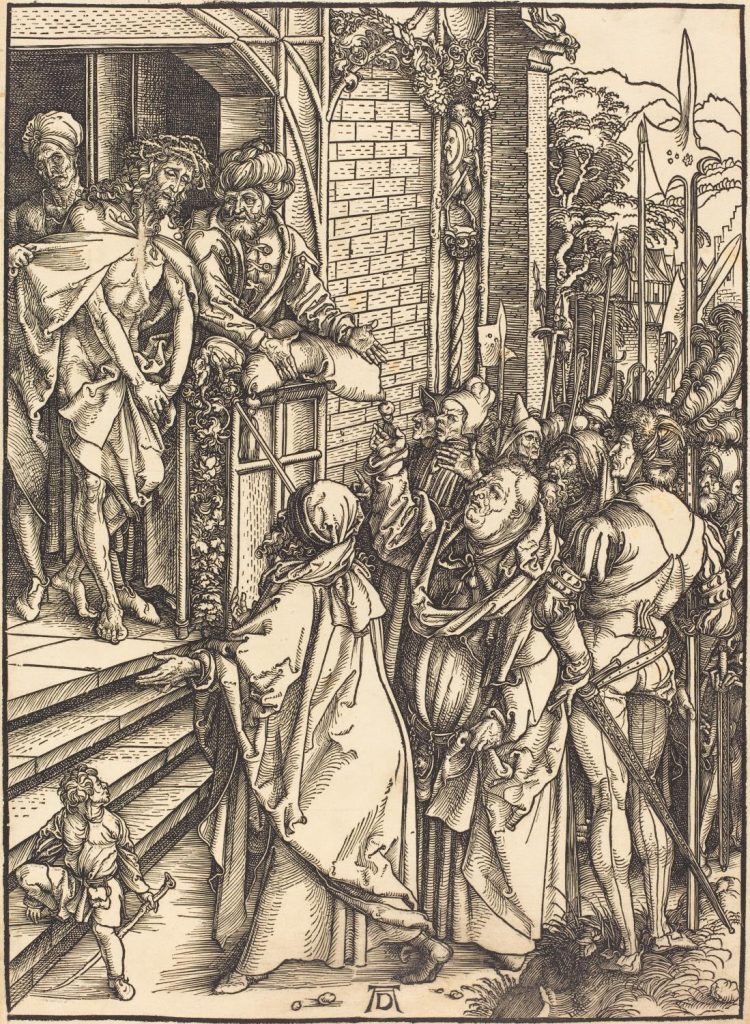
Dürer, Ecce Homo, 1497-1500 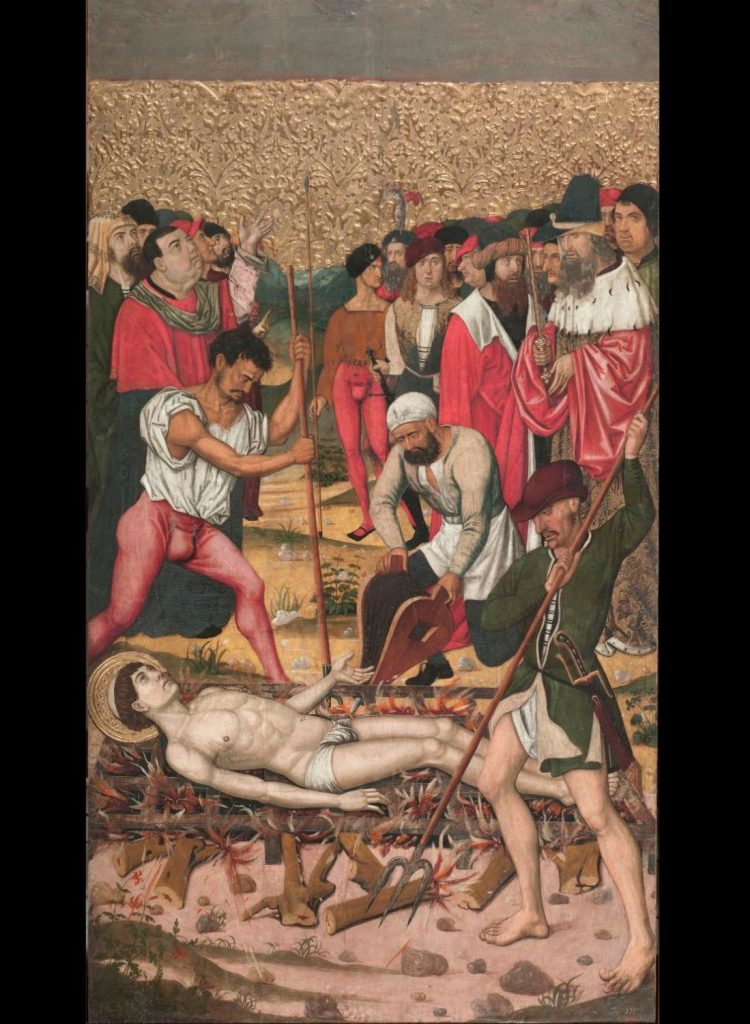
Master of Castelsardo, Saint Vincent on the Gridiron, 1500-1510
Other cases are also known: the engraving of the Madonna with the monkey (1496) can be noticed in the Virgin and child with the infant Saint John painted by Joan de Burgunya between 1515 and 1525.
The Birth of the Virgin (1503) is behind scenes such as in the Birth of Saint Eloi at the gates of the Altarpiece of St. Eloi of the Argentines by Pere Nunyes between 1526 and 1529 and in the Birth of the Virgin Mary carved in alabaster by Damià Forment between 1520 and 1525.
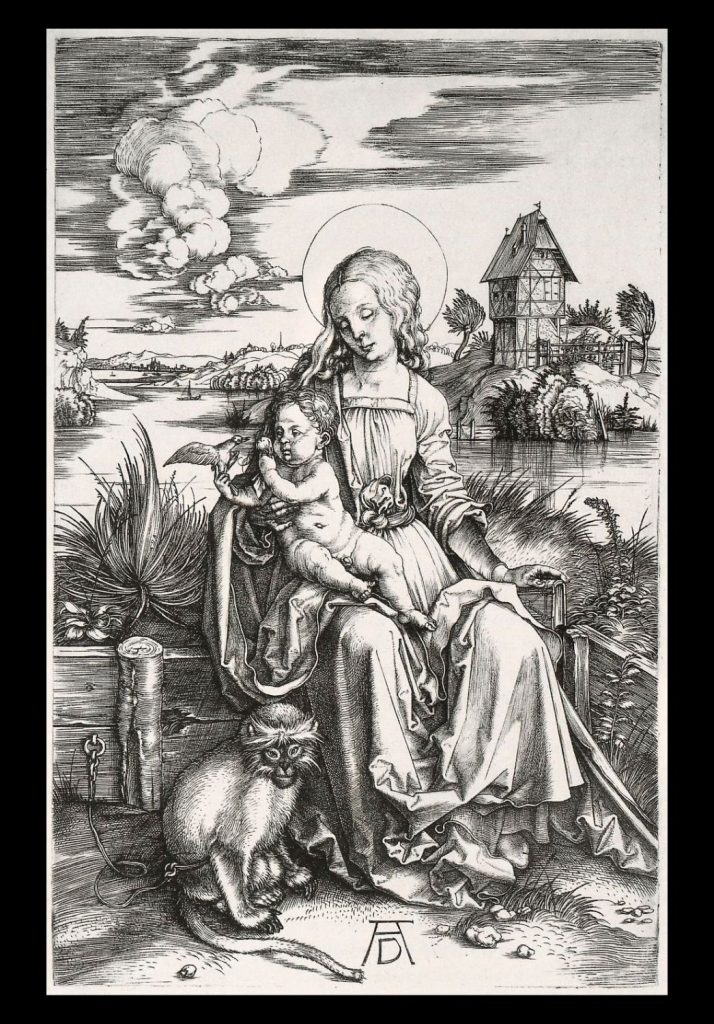
Dürer, The Virgin and Child with a Monkey, 1496 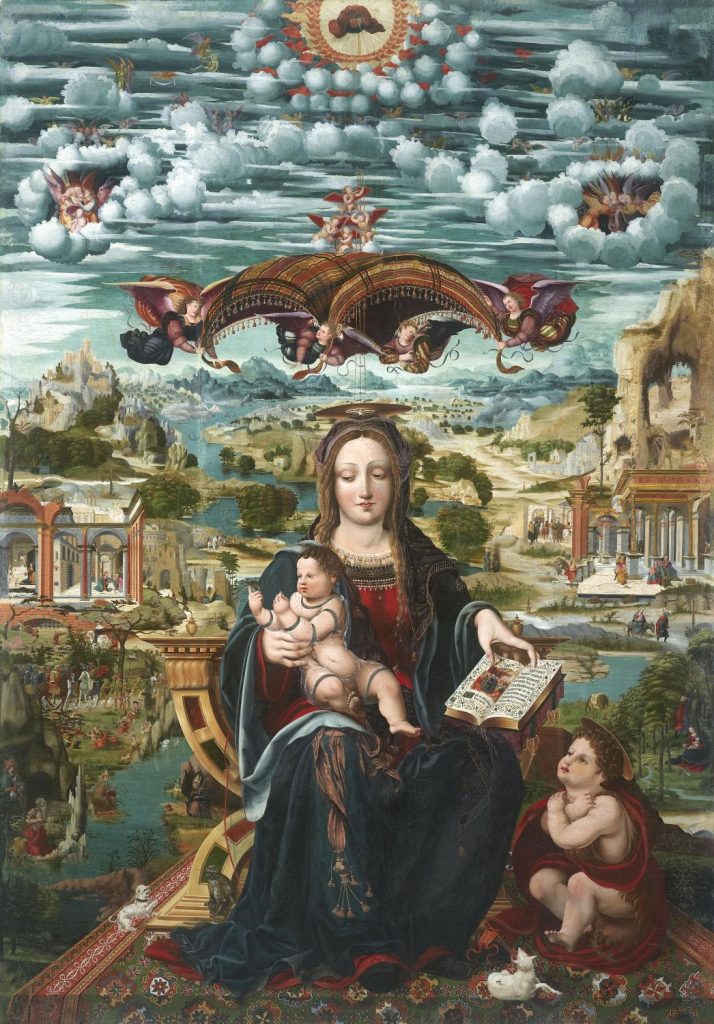
Joan de Burgunya, Virgin and Child with the Infant Saint John, 1515-1525
The Descent of Christ into Limbo (1512) can clearly be distinguished in Christ in limbo, produced anonymously from the German school around 1520, a panel that has a very similar version in the work conserved in the Museum of Fine Arts of Budapest (even in terms of dimensions); or the Way to Calvary (1511) which is in the basis of the same theme of Christ on the way to Calvary of the altarpiece of Sant Martí, from Arenys de Munt, carried out by Pere Serafí between 1543 and 1546.
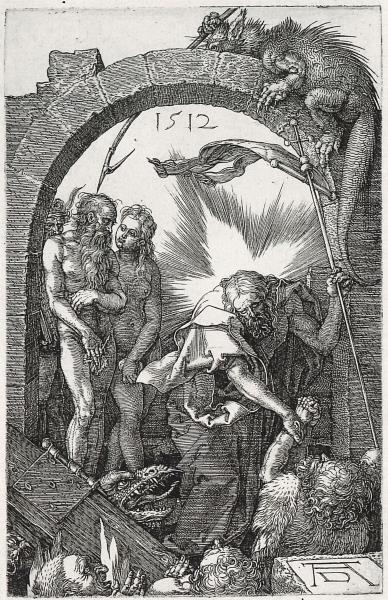
Dürer, Christ in limbo, 1512 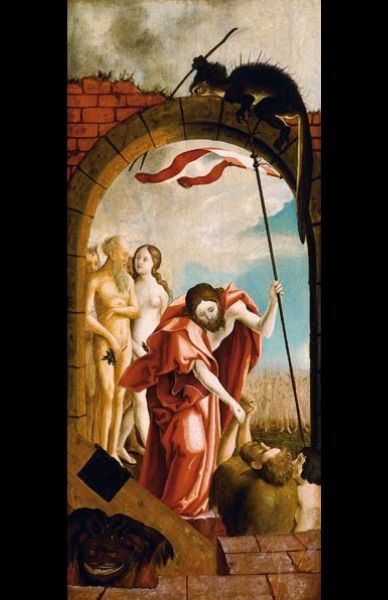
Anònim, Christ in Limbo, circa 1520
The influence of Dürer is also evident in other works from the collection of the museum’s collection. A paradigmatic case is the Altarpiece of the Passion of Christ painted by the Master of Astorga and dated around 1530, in which, of the seven scenes that we conserve of the set, in three we can distinguish the print of the German Master: the Arrest of Christ (1508), the Flagellation (1512) and the Resurrection (1509).
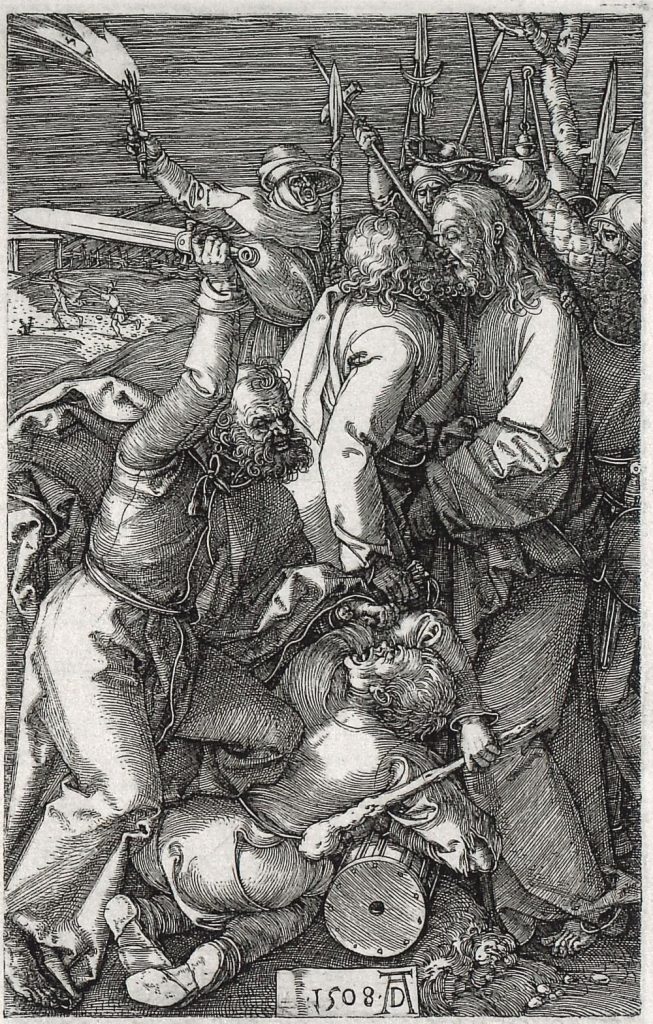
Dürer, Catch of Crist, 1508 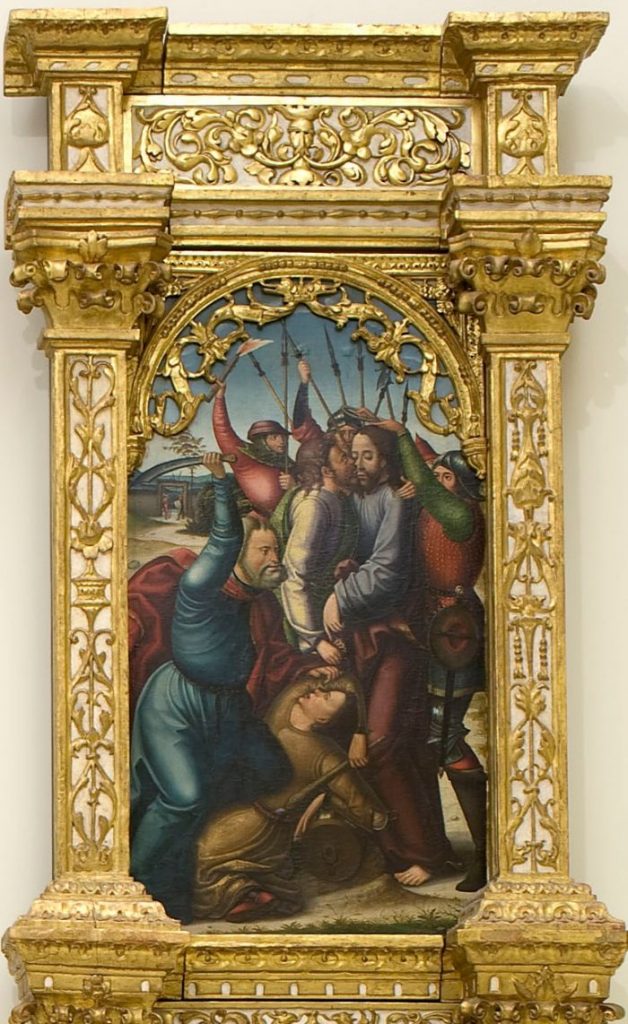
Master of Astorga, Altarpiece of the Passion of Christ, 1530
Another similar case is that of a triptych of small format with the Lamentation over the Dead Christ, anonymous work, from the Aragonese school, from the first half of the 16th century; As such, the artist also uses three prints of Dürer: the recently mentioned one of the Resurrection (1509) and the Ecce Homo (1512), as well as the Adam and Eve expelled from Paradise (1510) that we can contemplate on the doors of the set with the Grisaille technique.
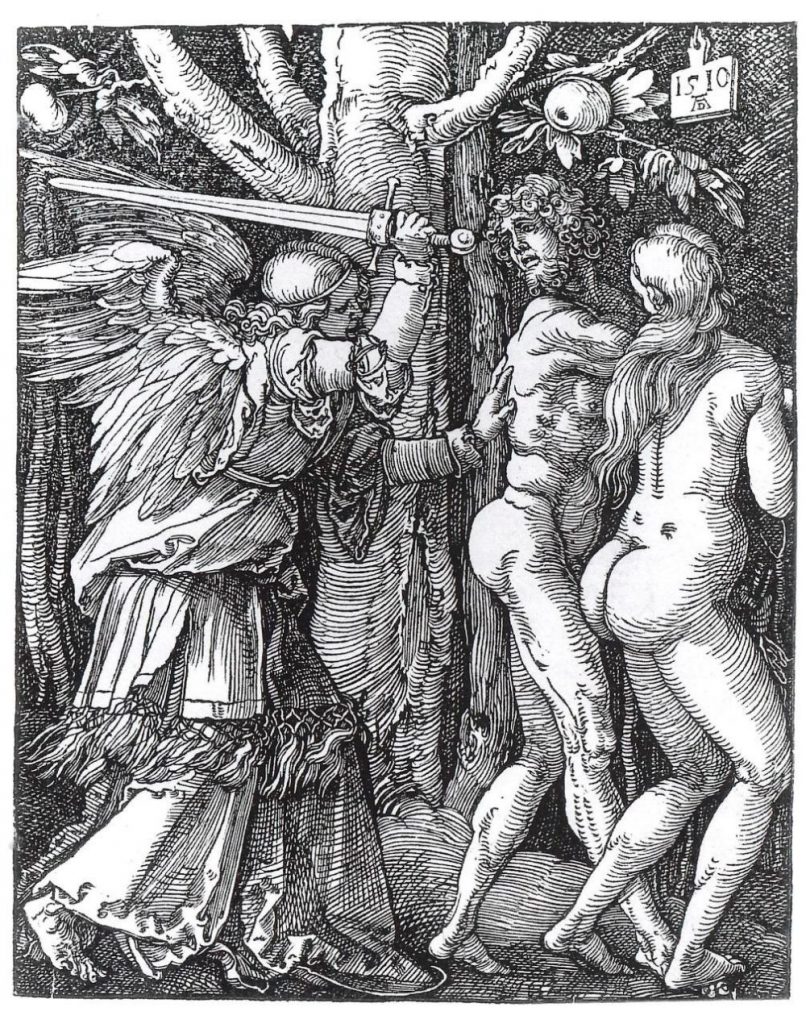
Dürer, Adam and Eve expelled from Paradise, 1510 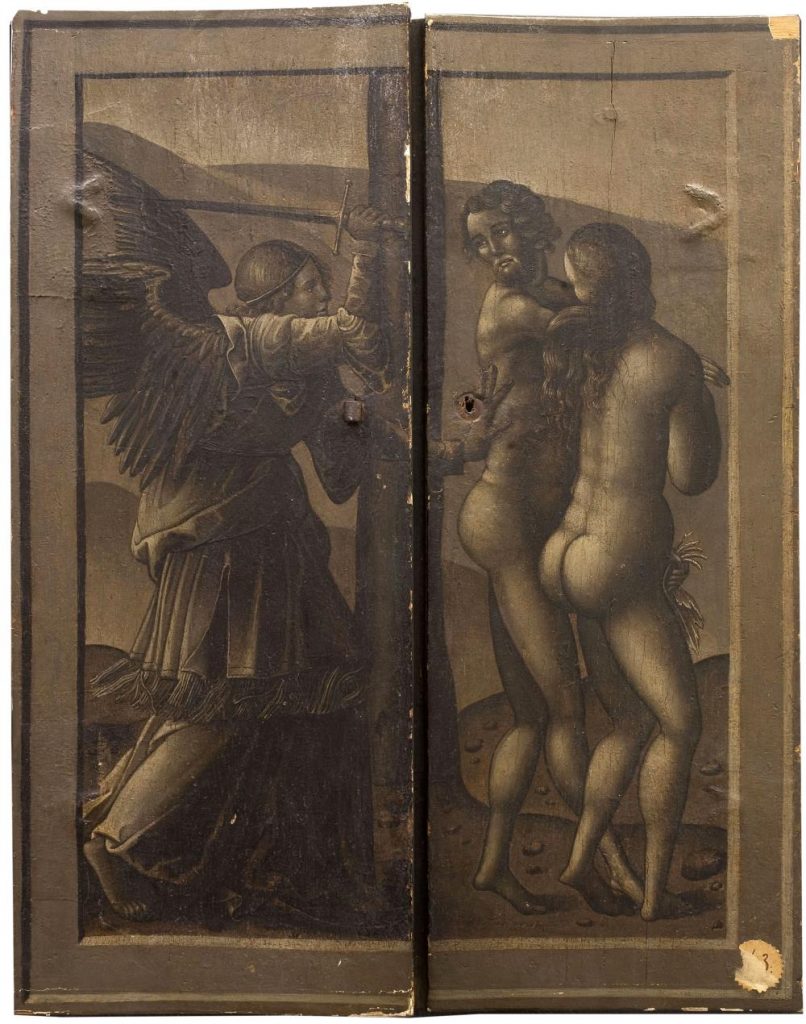
Triptych with the Mourning over the dead Christ, 1510-1550
Also a panel with the Santa Trinitat, which almost literally played out the scene of the eponymous engraving (1511); a Flemish painting of exceptional quality, which must be stylistically related to a Flemish painter, active in Brussels in the first half of the 16th century.
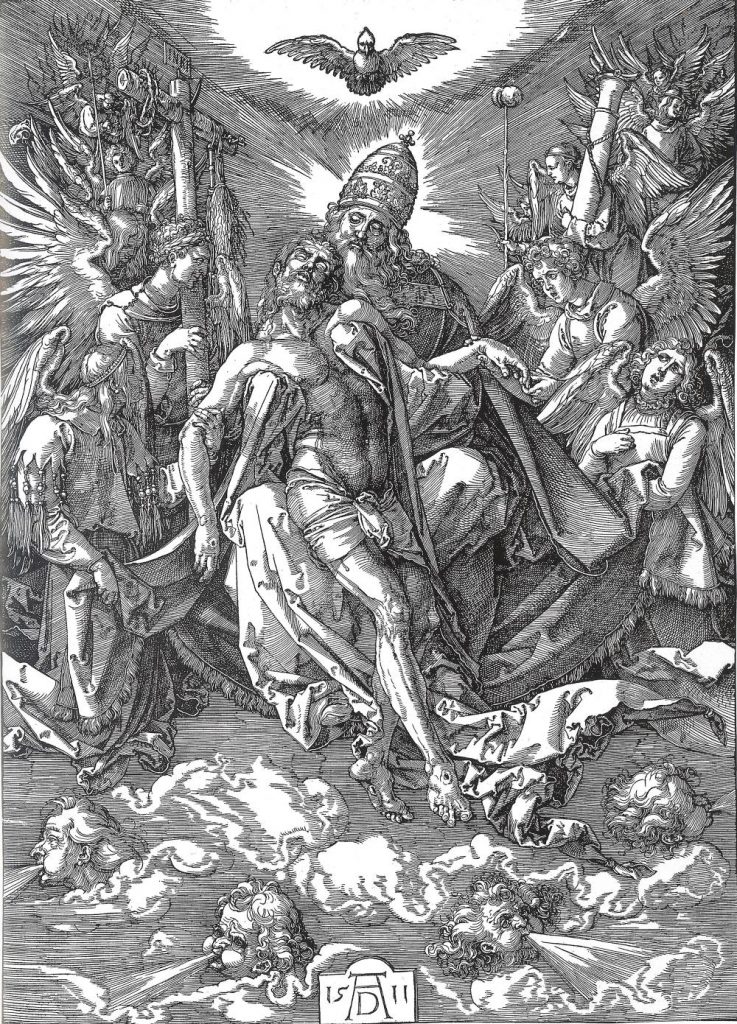
Dürer, Santa Trinitat, 1511 
Trinity, 2nd half of the 16th century
Finally, the prints of Dürer continued to enjoy great prestige in the majority of studios around Spain during the 17th century, suggesting different schools such as Seville, Madrid or Valencia (as Benito Navarrete, Alfonso E . Pérez Sánchez or Fernando Benito studied). An example of this is found in the Annunciation signed by Francisco de Solís, and dated 1664, despite it being said that he took the Tiziano model, it clearly leads us to a homonymous print of the German master (1510).

Dürer, Anunciació, 1510 
Francisco de Solís, Annunciation, 1664
Related links
Rethinking the Collection: new attributions in the Renaissance and Baroque
Four stories from the Renaissance and the Baroque
Art del Renaixement i Barroc







